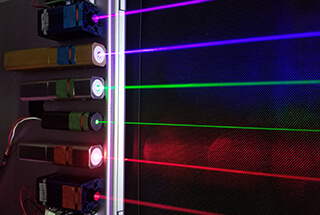For many professionals in the laser industry, laser protective glasses are a familiar concept. However, for many others, their understanding of these glasses may be limited, and they may only use them as required by their company’s regulations, without much knowledge about their functions.
Therefore, this article will explain why it’s important to use laser protective glasses of different colors depending on the specific occasion.
Characteristics of laser
To begin with, laser protective glasses are designed to protect against lasers.
As Sun Tzu’s Art of War states, “know thyself, know thy enemy, a thousand battles, a thousand victories.”
Therefore, it’s essential to comprehend the “enemy” of the laser in order to understand why laser protective glasses are necessary, and how they serve their purpose.
The term “laser” is derived from the light produced by atoms. When electrons in atoms absorb energy, they move from a low-energy state to a high-energy state before returning to their original state. This energy is emitted as photons.
As a result, the emitted photons are coherent, which gives lasers their distinctive monochromaticity, directional properties, and high brightness compared to regular light sources.
In simpler terms, visible light is an electromagnetic wave with a wavelength of approximately 400nm-700nm, according to high school physics.
Electromagnetic waves such as infrared, ultraviolet, microwaves, long-wave radio, X-rays, and gamma rays have specific wavelength ranges.
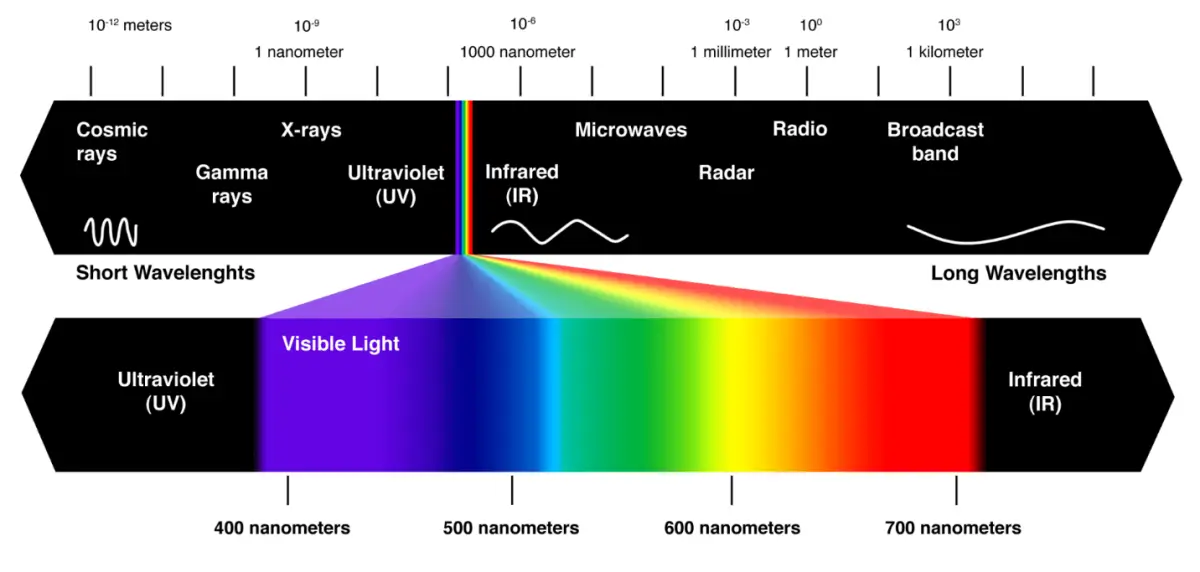
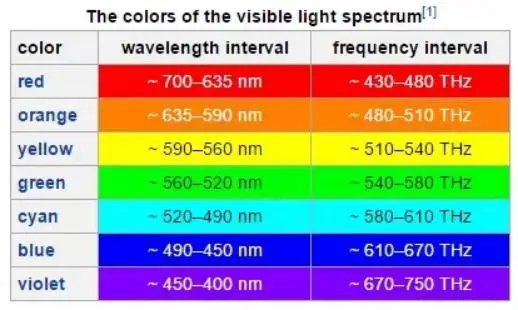
Wavelength and frequency range of seven colors of visible light
Unlike the aforementioned electromagnetic waves with a specific wavelength range, laser is an artificial electromagnetic wave generated with a unique wavelength through its own generating principle. This feature is characterized by:
1. Good monochromaticity
In other words, using the same wavelength results in a purer laser color. This can be observed in various laser shows where different types of lasers are used.
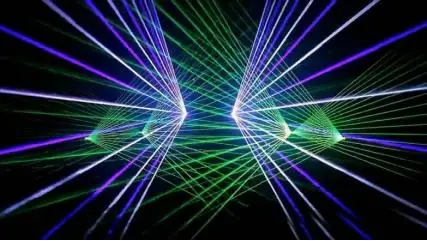
2. Good directivity
This means that the laser has a small divergence angle after emission, resulting in a straighter optical path. For instance, when measuring the distance between Earth and the Moon, a laser can be aimed at the lunar laser reflector located hundreds of thousands of kilometers away.

Laser aiming at the moon for ranging
3. Higher brightness
This means that the high concentration of laser energy results in higher brightness compared to ordinary light.
Laser hazards
The aforementioned characteristics of laser, also known as the “opponent,” make it highly detrimental to the human eye.
The eye’s aggregative properties increase its sensitivity to laser light by 100,000 times that of the skin. When laser light enters the eye, it focuses on the retina through the refractive medium, leading to an energy density increase of over 10,000 times compared to the energy density on the cornea.
Even low levels of laser energy can cause permanent damage to the cornea or retina. Laser eye injury can result in a sudden flash, followed by a light spot or shadow of varying colors and sizes, and may cause varying degrees of vision loss, temporary blindness, or photophobia.
It is worth noting that not all lasers are visible to the human eye. UV lasers, infrared lasers, 808 semiconductor lasers, erbium lasers, CO2 lasers, and others are all invisible. Ultraviolet light with a wavelength of 100nm-400nm can damage the cornea, while a laser wavelength between 400nm-1400nm can penetrate the lens and harm the retina, causing irreversible eye damage.
Laser wavelengths above 1400mm are relatively safe. However, in high-power laser environments such as those found in fiber lasers and CO2 lasers, invisible lasers can still cause severe eye damage if the eyes are unprotected.
Characteristics of laser application scenarios
After understanding the characteristics and hazards of the “opponent” laser, it is essential to be aware of their “attack strategy.” This knowledge will enable us to devise corresponding protection strategies to ensure the laser’s effective protection.
In practical applications, we need to use different lasers to produce wavelengths suitable for various scenarios. Due to the monochromatic properties of the laser, most working scenes will have only one or a few specific wavelengths. Therefore, protective tools’ design and production can focus on these specific wavelengths to achieve more effective protection.
Moreover, the high-energy characteristics of the laser, particularly in high-power laser applications, make the laser environment more “extreme” than natural light environments. It is akin to a tall building suddenly rising from the ground without a smooth transition. This extreme environment demands higher protective capabilities from our protective tools.
Laser protective glasses
In summary, when dealing with a relatively simple application environment (with a single and fixed laser wavelength) or extreme scenarios (with high laser intensity), it is crucial to have efficient protection across various application scenarios through a refined product classification of protective gear.
This is where laser protective glasses come into play.
The fundamental principle of laser protective glasses is to reflect and absorb artificial lasers that are not found in nature by using different lens coatings and special lens materials. This helps prevent damage to human eyes.
Currently, laser protective glasses are mainly classified into absorption type, reflection type, and composite laser protective glasses that combine the two.
To meet the protective gear requirements mentioned above, a diverse product line of laser protective glasses has been developed to achieve “efficient protection under different application scenarios.”
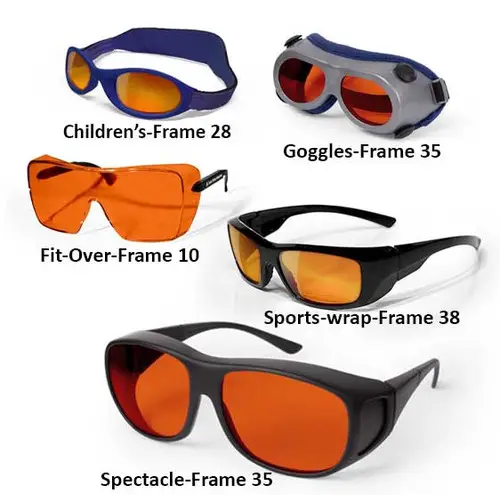
The reason why lenses may exhibit different colors is mainly due to the use of various nano laser-absorbing materials in the lens. This is done to achieve the most effective protection against a single wavelength laser, which results in different colors being displayed by the lens.
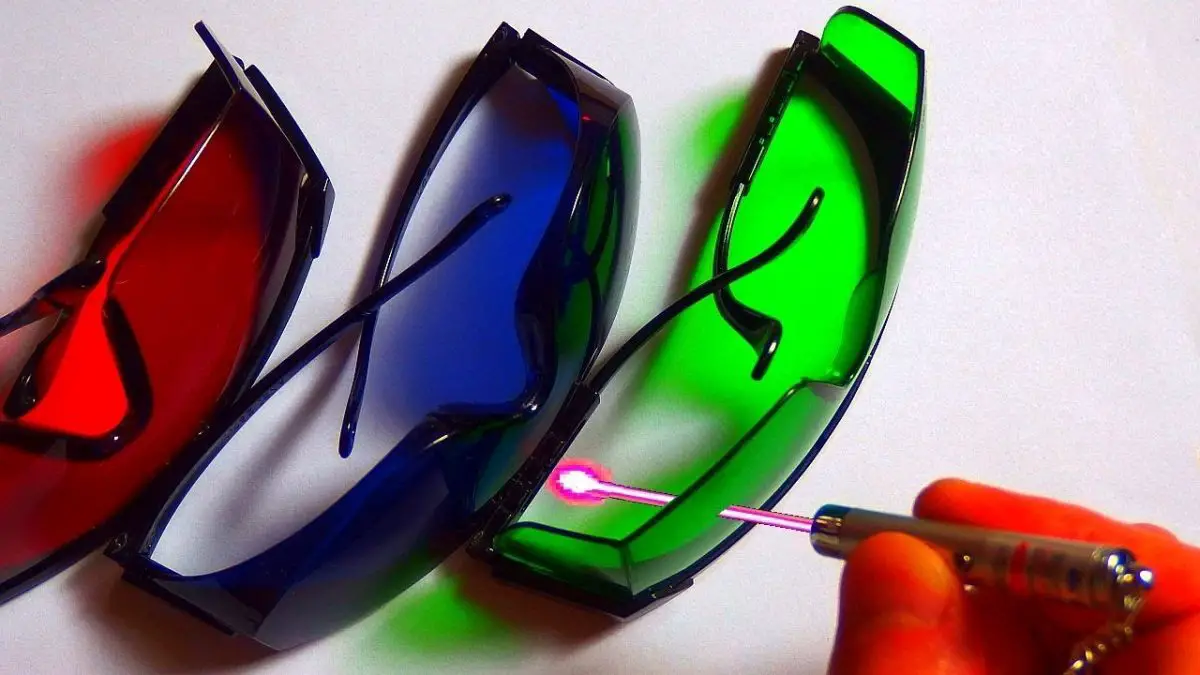
On the other hand, the various lens colors allow users to easily identify the appropriate usage scenarios for different glasses, thus reducing the user’s need for trial and error.
Therefore, we can now answer the question posed at the beginning of this article.
The distinct colors of laser protective glasses signify the ideal application scenarios for each pair of glasses, ensuring safety for all users.


